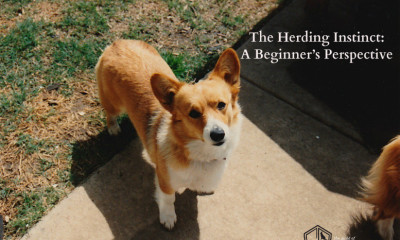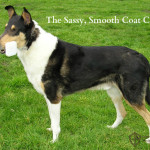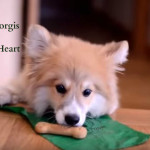The Herding Instinct: A Beginner’s Perspective
All Herding Breed Dogs Have A Herding Instinct ... Or So I Thought!

How It Began
When my Pembroke Welsh Corgi was 18 months old, I brought her to an event sponsored by a local herding dog association to see if I could uncover the herding instinct that dogs of her breed are known to possess.
As a resident of a suburban neighborhood in Fort Worth, I had no livestock for Debbie to work and no job I wanted her to do, other than be my faithful companion.
It was an outing of discovery, piqued by my own curiosity about inherited behavior and pushed along by the pride of owning my first purebred dog - an eye-catching sable that I was more than happy to show off.
Having read that Corgis can herd cattle, I wondered how my inexperienced dog would react in an encounter with a small flock of sheep - animals she’d never seen or smelled before.
Would a working dog magically rise to the occasion, gathering and driving by virtue of genes that had probably gone unexpressed for generations? Or would she back off, having no such sixth sense on which to rely?
There was only one way to find out.
The Event
The Saturday morning clinic I signed up for was open to both herding and non-herding breeds. Several dog owners with questions like mine had brought their novice Border Collies and Shetland Sheepdogs. A striking black Belgian Sheepdog stood out, as well as a massive Rottweiler.
After a short introduction, a clinician called our names one-by-one and we took our dogs out to the pasture to confront the sheep, with varying results.
In general, the Border Collies recognized the belligerent sheep as a job to be done from the get-go, dropping to the ground in a menacing posture that clearly put the herd on red alert.
It was exciting to see the dogs’ instincts click on as they locked in on their target and moved forward with a sense of purpose, though tempered by youthful uncertainty.
One Border Collie tucked its tail and ran, however, to the embarrassment of its owner, who berated it loudly as it scoured the fence line for an escape route.
The Belgian Sheepdog began circling the flock almost immediately, triggering flight, but clinicians called off the showdown when the dog came on too strong, acting more like a hunter than a gatherer.
Most astonishing were the largely ineffective efforts of the imposing Rottweiler, which the sheep mostly ignored until the muscular animal began pushing them vigorously with his head and shoulders.
Our clinician explained this as the breeds lack of “aura”, an invisible but persuasive force projected by breeds like the Border Collie. That aura, which mimics predatory behavior, allows the dogs to control stock with little or no physical contact.
Debbie’s Debut
The Corgi is said to herd cattle by nipping their heels. Their small stature is a plus as it makes them hard to see, and they can’t reach the more dangerous tendon higher on a cow’s leg, according to “The Complete Pembroke Welsh Corgi”, by Mary Gay Sargent and Deborah S. Harper.
Mine showed little interest in the sheep other than a casual glance and an obligatory sniff or two. She looked up at me expectantly, but I was powerless to instruct her, having had no training myself.
I don’t think it would have made a difference.
I did try throwing dirt clods in the sheep’s direction, hoping to wake Debbie’s dormant instincts by activating her strong desire to fetch, but it caused no reactions.
Lesson Learned
My limited experience was in no way scientific, yet my take-away was that the breed of dog impacts herding prowess in a big way, but doesn’t guarantee a favorable outcome.
I would want to see an individual puppy’s reaction to my sheep or cattle before selecting one for herding duties.
Article By:
Judy Sheridan






